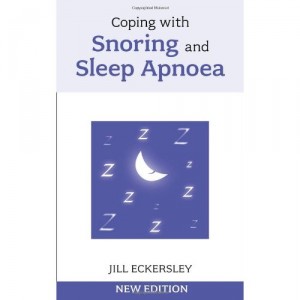 May 10th, 2011
May 10th, 2011 Sleep Apnoea
Sleep Apnoea, A Modern Day Epidemic?
Sleep Apnoea or as it is more commonly known Sleep Apnea is a medical condition that restricts breathing as a person sleeps. The sufferer stops breathing for varying periods of time which decreases the supply of Oxygen to their lungs and as a result increases the levels of Carbon Dioxide in the blood. The increased Carbon Dioxide concentration levels eventually trigger the breathing mechanism in the brain to make the person wake momentarily (sometimes without them even being aware that they have woken) and gasp for air.
Some types of sleep apnoea will cause shallow breathing and only pauses in breathing for a few seconds. The more severe cases obstruct breathing, for extended and repeated periods of time while the sufferer sleeps and may even result in a number of what at first glance appear to be unrelated medical problems including heart attack, diabetes and weight gain.
Types of Sleep Apnoea
The three types of Sleep Apnoea are:-
- Obstructive Sleep Apnoea,
- Central Sleep Apnoea, and
- Mixed Sleep Apnoea.
Obstructive Sleep Apnoea or OSA is the most common and severe kind of apnea wherein the patient is typically (though not always) overweight, has reduced muscle toning in the throat and/or have a large tongue and tonsils but has a small jaw so that when sleeping the muscles at the base of their tongue and uvula relax and sag, blocking the passage of air and preventing breathing.
When this happens, blood oxygen levels in the body decrease putting stress on the heart. the pulse rate becomes faster, blood pressure rises and the patient’s diagram muscles stain to get air past the blockage in the throat. This usually leads to a big gasp for air, sometimes accompanied by a sudden loud snore and a start as you take a much needed gasp of air into the lungs. OSA symptoms can be compounded further if the person takes sleeping pills, drinks alcohol prior to going to sleep or is on anti-histamines.
Coping with Snoring and Sleep Apnoea n/e – Special focus on sleep apnoea
The second type of Sleep Apnea, Central Sleep Apnea or CSA is not as common as Obstructive Sleep Apnea. Central Sleep Apnea occurs when your brain does not send the required signals to maintain breathing and you just stop breathing for a short period. This condition continues until the level of Carbon Dioxide in your blood reaches a critical level and then a strong stimulus is exerted by the brain to trigger a restart in breathing. The basic problem is that the brain is not responding in the usual way to the Carbon Dioxide concentrations in the blood that normally regulate the breathing process.
The third type of apnea, Mixed Sleep Apnea or MSA, is a condition that combines symptoms of both Obstructive Sleep Apnea and Central Sleep Apnea. In this case, when symptoms of the more serious Obstructive type are present on a long term basis, the patient tends to develop Central Sleep Apnea. This condition is also commonly seen in infants and young children.
Symptoms of Mixed Sleep Apnea are characterized by longer than normal sleeping periods, snoring, and sweating, heaving chest, flaring nostrils, bed-wetting, irritability, decreased weight and growth rate. Some children may have behavioural problems such as hyperactivity and lack of attention. For such young children and infants, it is best to have them tested and treated for the disorder immediately.
Impact of Sleep Apnoea
Sleep apnea has been associated with more medical conditions such as high blood pressure and heart disease. It may increase risks of heart attacks, arrhythmia and stroke. It can also cause irritability, poor performance at school or work, migraines, and sleepiness during the day, with an increased risk of accidents at work or while driving a vehicle. Since apnea sufferers usually lack sleep, they may have a hard time concentrating at school and work, and tend to be forgetful.
Some may experience depression which leads to relationship and work problems. Children are suspected to develop ADHD. Some people may believe that snoring is something to laugh about, but people who snore a lot and loudly may have Obstructive Sleep Apnea. particularly if the Snoring does not sound like normal snoring that is even throughout the night.
Be aware of the warning signs of apnea like uneven snoring that include gasping for air and jolting out of sleep. If you do not sleep with the person in the same room, look out for other symptoms such as sleepiness and frequent napping during the day. Children may appear dazed all the time or lack energy to play. If you suspect a loved one has any of the three types of sleep apnea, then make an effort to monitor their breathing while they sleep and if it seems that their breathing actions while they sleep has the symptoms of sleep apnoea then take them to a doctor or convince them to seek professional help.

